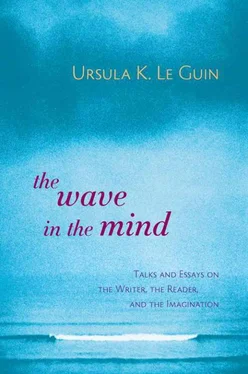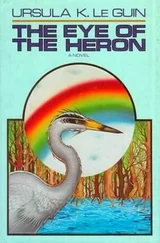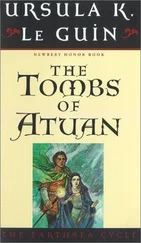Men 85.5, women 8.5. MF ratio almost exactly 10:1
The years women were given the Nobel for Literature were 1909, 1926, 1928, 1938, 1945, 1966, 1991, 1993, 1996: pretty much one woman per decade, till the nineties when three women were given prizes.
The Pulitzer Prize for Literature (voted by a jury of writers)
Given since 1918, with six no-award years.
Men 50, women 23. MF ratio just over 2:1
The ratio has declined severely from parity since 1943. Of the 23 awards to women, 12 were given in the 25 years 1918–1943, but only 11 in the 54 years 1944–1998. Since 1943, though half or more of the shortlist authors are often women, 5 out of 6 winners have been men (MF ratio 5:1).
The Booker Prize (voted by a jury of writers and critics)
Given since 1969.
Men 21, women 11. MF ratio 2:1
This ratio has been pretty steady over 30 years, remaining the nearest parity of the prizes I examined.
The National Book Award/American Book Award
Given since 1950, with various types of jury, various sponsors, and several changes of category in fiction, so it is hard to count. As well as I can determine, the “Best Novel” award (excluding genre and juvenile) has been as follows:
Men 43, women 7. MF ratio 6:1
The PEN/Faulkner Award for Fiction (voted by a jury)
Given since 1981.
Men 17, women 2. MF ratio 8.5: 1
As there are always women on the shortlist for the PEN/Faulkner, I was startled, in fact shocked, to discover how few have been given the award. This prize is almost as male oriented as the Nobel.
The Nebula Award (science fiction and fantasy; voted by public nomination and secret ballot of members of the Science Fiction and Fantasy Writers’ Association)
Given since 1965.
Men 24, women 10. MF ratio 2.4:1
The Hugo Award (science fiction; voted by ballot of members of the World Science Fiction Convention)
Given since 1953.
Men 36, women 11. MF ratio 3:1
I find it interesting that these two balloted awards, the Nebula selected by writers and the Hugo by fans, are nearer parity than several juried awards, and far nearer parity than the similarly balloted Edgar.
The World Fantasy Award (given by a jury, plus an anonymous decision)
Best Novel (split awards cause decimals):
Men 18.5, women 5.5. MF ratio 3:1
Lifetime Achievement (16 awards plus a 5-way split):
Men 17, women 3. MF ratio 6:1
The Edgar Award
Best Novel (mystery; voted by the members of the Mystery Writers of America)
Given since 1946.
Men 39, women 13. MF ratio 3:1
This ratio is for the whole 52 years. From 1946 to 1970, 16 men and 8 women were given the prize, making the ratio 2:1. But in the 28 years since 1970, despite the fact that considerably more women than men write mysteries, only 5 women have won “Best Novel,” making the MF ratio almost 5:1.
Grand Master
First given in 1955, to Agatha Christie. For the next 15 years, only men were made Grand Masters. By 1998, of the 46 Grand Masters, 35 were men, 8 women—but 3 of those 8 women shared a single award. No men have been asked to share their Grand Mastery. Counting the 3-in-1 as a single award, the MF ratio is 7:1.
The Newbery Award (for excellence in children’s literature; voted by a “panel of experts”)
Given since 1922.
1922–1930, all the awards went to men; 1931–1940, all to women. From 1941–1998, men 16, women 40. As about 1 out of 3 authors of books for children and young adults is a man, the prize is a pretty fair reflection of author gender. [1] The previous printing of this work contained incorrect statistics and conclusions concerning the gender balance of the Newbery Award. I apologise for the misinformation.
I wrote this piece as a reader’s personal response to a text. Finding myself troubled by many of E. O. Wilson’s sweeping statements, I tried to figure out what was troubling me. I did it in writing because I think best in writing. An amateur responding to a professional is likely to make a fool of herself, and no doubt I’ve done just that; but I decided to publish the piece. I am not pitting my opinions against scientific observation; I am pitting my opinions against a scientist’s opinions. Opinions and assumptions, when presented by a distinguished scientist, are likely to be mistaken for scientific observations—for fact. And that was what troubled me.
In his very interesting autobiography, Naturalist , E. O. Wilson summarises the statement of the biological foundations of human behavior made in his book Sociobiology:
Genetic determinism, the central objection raised against [ Sociobiology ], is the bugbear of the social sciences. So what I said that can indeed be called genetic determinism needs saying here again. My argument ran essentially as follows: Human beings inherit a propensity to acquire behavior and social structures, a propensity that is shared by enough people to be called human nature. The defining traits include division of labor between the sexes, bonding between parents and children, heightened altruism toward closest kin, incest avoidance, other forms of ethical behavior, suspicion of strangers, tribalism, dominance orders within groups, male dominance overall, and territorial aggression over limiting [limited?] resources. Although people have free will and the choice to turn in many directions, the channels of their psychological development are nevertheless—however much we might wish otherwise—cut more deeply by the genes in certain directions than in others. So while cultures vary greatly, they inevitably converge toward these traits…. The important point is that heredity interacts with environment to create a gravitational pull toward a fixed mean. It gathers people in all societies into the narrow statistical circle that we define as human nature. (E. O. Wilson, Naturalist , pp. 332, 333)
That human beings inherit a propensity to acquire behavior and that the construction of society is one of these behaviors, I agree. Whether anything worth the risk is to be gained by calling this propensity “human nature,” I wonder. Anthropologists have excellent justification for avoiding the term human nature , for which no agreed definition exists, and which all too easily, even when intended as descriptive, is applied prescriptively.
Wilson states that the traits he lists constitute a “narrow statistical circle that we define as human nature.” Like Tonto, I want to ask, “Who ‘we,’ white man?” The selection of traits is neither complete nor universal, the definitions seem sloppy rather than narrow, and the statistics are left to the imagination. More statistics and completer definitions are to be found in Sociobiology , of course; but Wilson’s own statement of what the book says is as accurate and complete as it is succinct, so that I think it fair to address my arguments to it.
Taking it, then, phrase by phrase:
Division of labor between the sexes:
This phrase means only that in all or most known societies men and women do different kinds of work; but since it is very seldom understood in that strict meaning, it is either ingenuous or disingenuous to use it in this context without acknowledging its usual implications. Unless those implications are specifically denied, the phrase “division of labor between the sexes” is understood by most readers in this society to imply specific kinds of gender-divided work, and so to imply that these are genetically determined: our genes ensure that men hunt, women gather; men fight, women nurse; men go forth, women keep the house; men do art, women do domestic work; men function in the “public sphere,” women in the “private,” and so on.
Читать дальше



